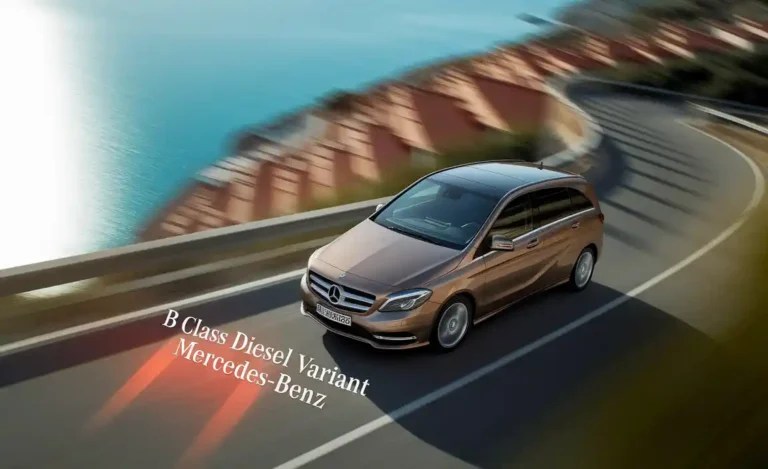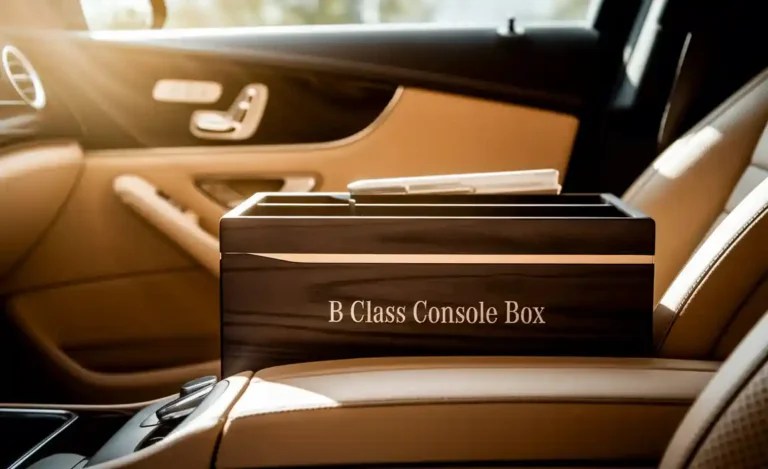B Class Dynamic Mode: Ultimate Effortless Drive
The Mercedes-Benz B-Class Dynamic Mode allows you to tailor your driving experience. By selecting different modes, you can adjust engine response, gearshifts, and steering feel for comfort, sportiness, or efficiency. Understanding and utilizing these modes enhances your connection to your B-Class, making every drive more enjoyable.
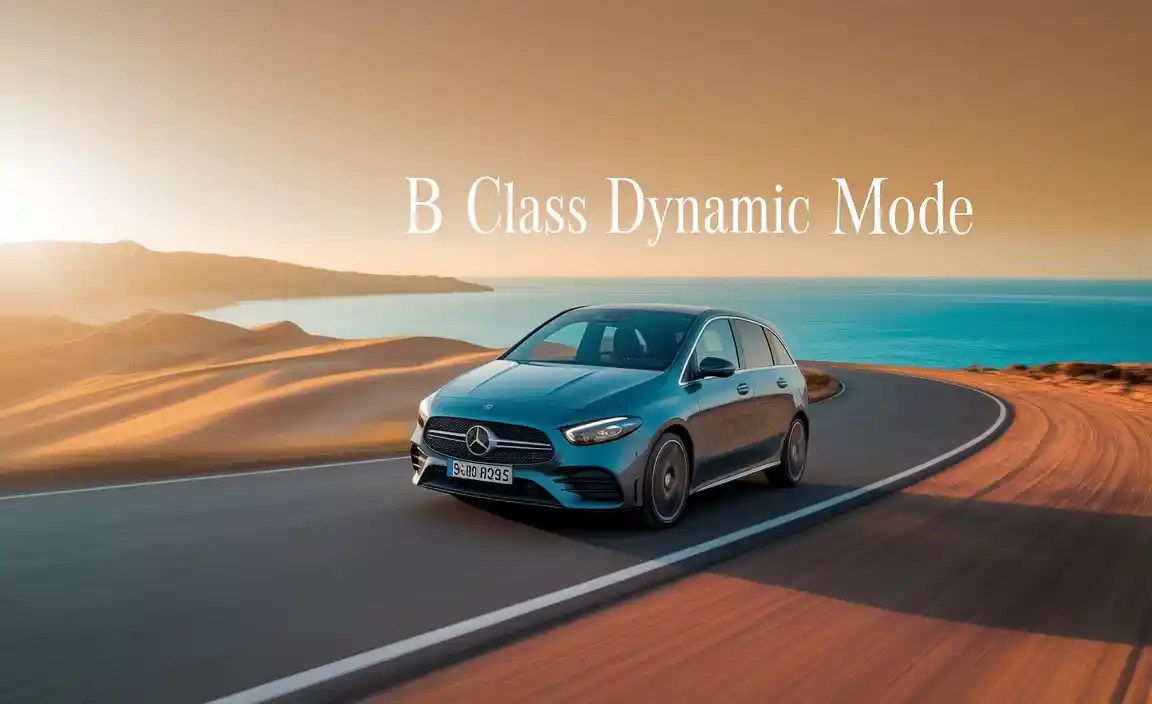
Driving a Mercedes-Benz B-Class should feel effortless and tailored to you. Sometimes, you want a relaxed cruise, other times a more responsive feel. The B-Class Dynamic Mode system is Mercedes-Benz’s clever way of letting you switch between these preferences with ease. It’s designed to adapt your car’s character to your mood and the road ahead, ensuring that whether you’re navigating busy city streets or enjoying an open highway, your driving experience is optimized. Let’s dive into how this system works and how you can put it to best use. We’ll break down each mode, explain the technology behind it, and guide you on choosing the perfect setting for any journey.
Understanding the Mercedes-Benz B-Class Dynamic Mode
The core of the B-Class Dynamic Mode system lies in its ability to alter the vehicle’s behavior through programmed settings. These modes are not just superficial tweaks; they fundamentally change how the car’s powertrain, transmission, steering, and even suspension (if equipped with adaptive features) respond to your inputs. Mercedes-Benz engineers have meticulously calibrated these modes to offer distinct driving characteristics, making the B-Class a versatile companion for various situations.
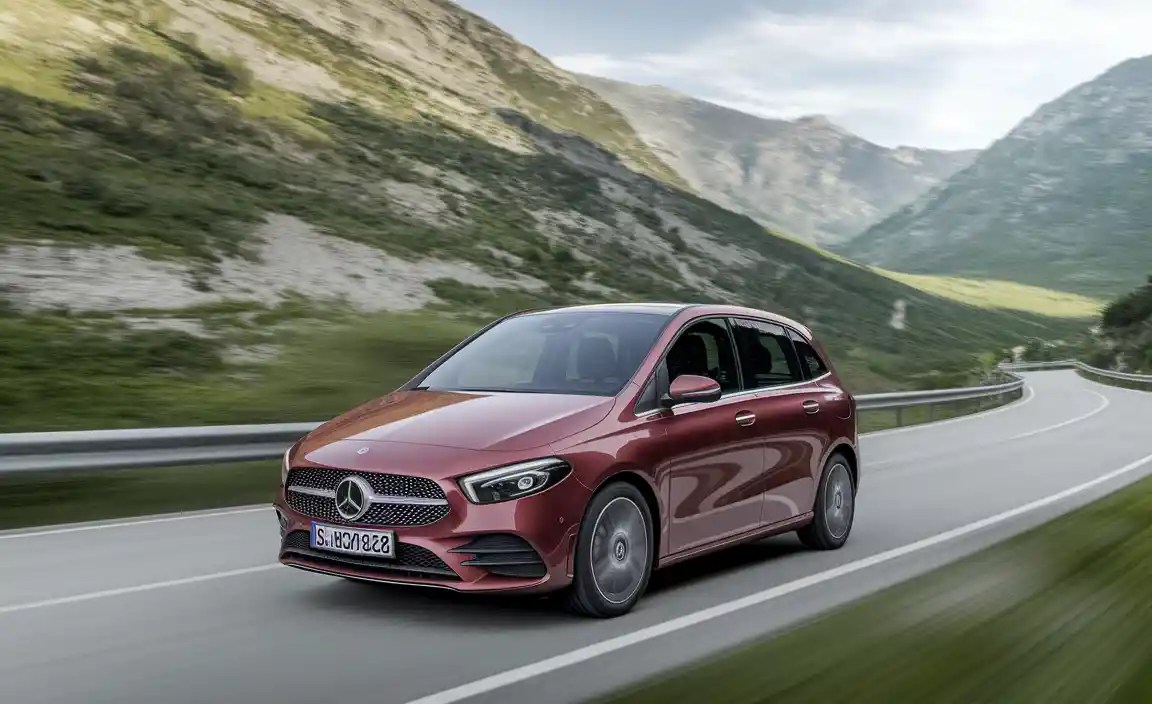
How Dynamic Mode Works: The Technology Behind the Drive
At its heart, the Dynamic Mode system operates by communicating with various electronic control units (ECUs) within the vehicle. When you select a mode, the system sends signals to:
Engine Control Unit (ECU): This unit adjusts throttle response. In sportier modes, the engine will react more sharply to your accelerator pedal input, delivering quicker acceleration. In economy modes, it softens the throttle response to encourage smoother, more fuel-efficient driving.
Transmission Control Unit (TCU): The gearbox behavior is modified. Sport modes will hold gears longer, provide quicker shifts, and shift down more aggressively under braking. Comfort modes will prioritize smooth, early upshifts and a gentler driving feel.
Electric Power Steering (EPS) Control Unit: Steering resistance can be altered. Sportier settings might provide more weight and direct feedback, while comfort settings offer lighter, easier steering for city driving and parking.
Optional Suspension Control Unit (e.g., AGILITY CONTROL, AIR BODY CONTROL): If your B-Class is equipped with adaptive suspension, the Dynamic Mode can influence damping characteristics, making the ride firmer and more stable in sport modes or softer and more compliant in comfort modes.
This integrated approach ensures that a single button press can transform the car’s entire driving demeanor, providing a truly adaptable and rewarding experience.
The Different Dynamic Drive Modes Explained
The Mercedes-Benz B-Class typically offers a selection of driving modes that cater to different driving preferences and conditions. While specific names might vary slightly between model years and feature packages, the core functionalities remain consistent. The most common modes are:
Comfort: This is the default mode and the one you’ll likely use most often for daily driving. It prioritizes a smooth, relaxed ride and fuel efficiency. Throttle response is gentle, gearshifts are subtle and occur at lower RPMs, and the steering is light and easy to maneuver. This mode is perfect for city commuting, long highway journeys where a relaxed atmosphere is desired, or when carrying passengers who prefer a serene experience.
Sport: Engaging Sport mode transforms the B-Class into a more dynamic and engaging vehicle. The throttle becomes more sensitive, meaning a slight press of the accelerator results in a more immediate response. Gearshifts happen at higher RPMs and are quicker, providing a more spirited acceleration feel. The steering typically gains a bit more weight, offering a more direct connection to the road. This mode is ideal for enthusiastic driving, spirited cornering, or when you simply want to feel a more responsive connection with your car.
Eco: The Eco mode is designed with maximum fuel efficiency in mind. The throttle response is significantly softened to discourage aggressive acceleration. The transmission will shift up as early as possible to keep engine RPMs low. Some systems might even adjust air conditioning output to further reduce load on the engine. While it might feel less responsive, this mode is excellent for maximizing your mileage, especially in stop-and-go traffic or on long, steady drives.
Individual: Many B-Class models also feature an “Individual” or “Custom” mode. This allows you to mix and match the settings from other modes to create your own personalized driving experience. For example, you might prefer the Comfort steering but the Sport engine response. The Individual mode gives you the ultimate flexibility to fine-tune the car to your exact preferences.
How to Select and Use Dynamic Drive Mode in Your B-Class
Switching between the Dynamic Drive Modes in your Mercedes-Benz B-Class is straightforward. Mercedes-Benz has designed the system for intuitive use, ensuring you can change modes quickly without distraction.
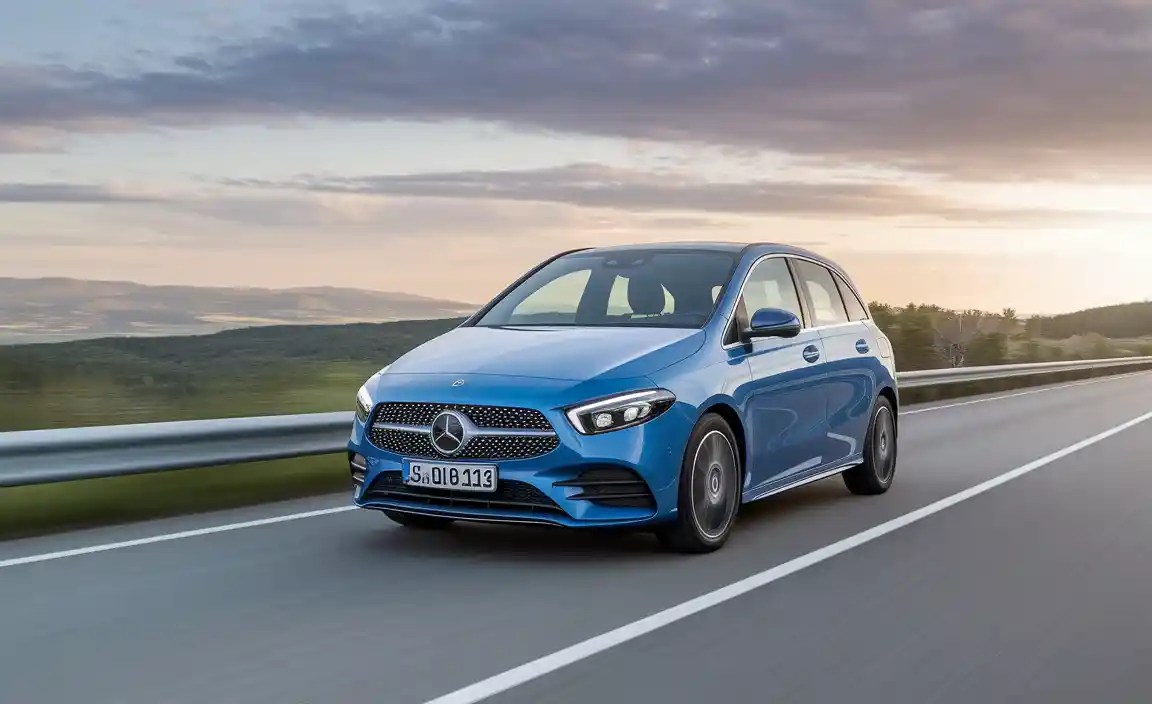
Step-by-Step Guide to Changing Modes:
1. Locate the Mode Selector: The primary way to access the Dynamic Select modes is typically via buttons located on the center console. These are usually grouped together, often near the gear selector or climate controls. You might see icons representing each mode, or simply labels like “C,” “S,” “E,” or “I.”
2. Press the Desired Mode Button: Simply press the button corresponding to the mode you want to engage. For example, pressing “S” will switch to Sport mode, and pressing “C” will select Comfort.
3. Confirm on the Display: After pressing a button, the selected mode will be clearly indicated on the car’s instrument cluster or central infotainment display. This visual confirmation ensures you know which setting is active at a glance.
4. Adjust via MBUX (If Equipped): Newer B-Class models equipped with the Mercedes-Benz User Experience (MBUX) infotainment system might offer an alternative way to select Dynamic Modes. You can often access and adjust these settings through the vehicle’s touchscreen menu, usually found under a “Vehicle” or “Driving” section. This method offers a more visual and detailed interface for managing your car’s driving characteristics.
Tips for Optimal Mode Selection:
City Driving: “Comfort” is usually best for smooth, stress-free city driving. “Eco” can be useful for saving fuel in heavy traffic.
Highway Cruising: “Comfort” provides a relaxed and quiet ride. For a more engaging feel when overtaking, a quick switch to “Sport” can be beneficial.
Spirited Driving: “Sport” mode is designed for this, offering sharper responses and a more dynamic feel on winding roads.
Fuel Saving: Dedicate your drives to “Eco” mode when maximizing your range is the priority.
Personalization: Once you’re familiar with the modes, experiment with “Individual” mode to create your perfect balance of characteristics.
The Benefits of Using B-Class Dynamic Mode
The integration of Dynamic Mode in the Mercedes-Benz B-Class offers a multitude of advantages that enhance the ownership experience significantly. It’s more than just a feature; it’s a system designed to make your car more versatile and enjoyable in every scenario.
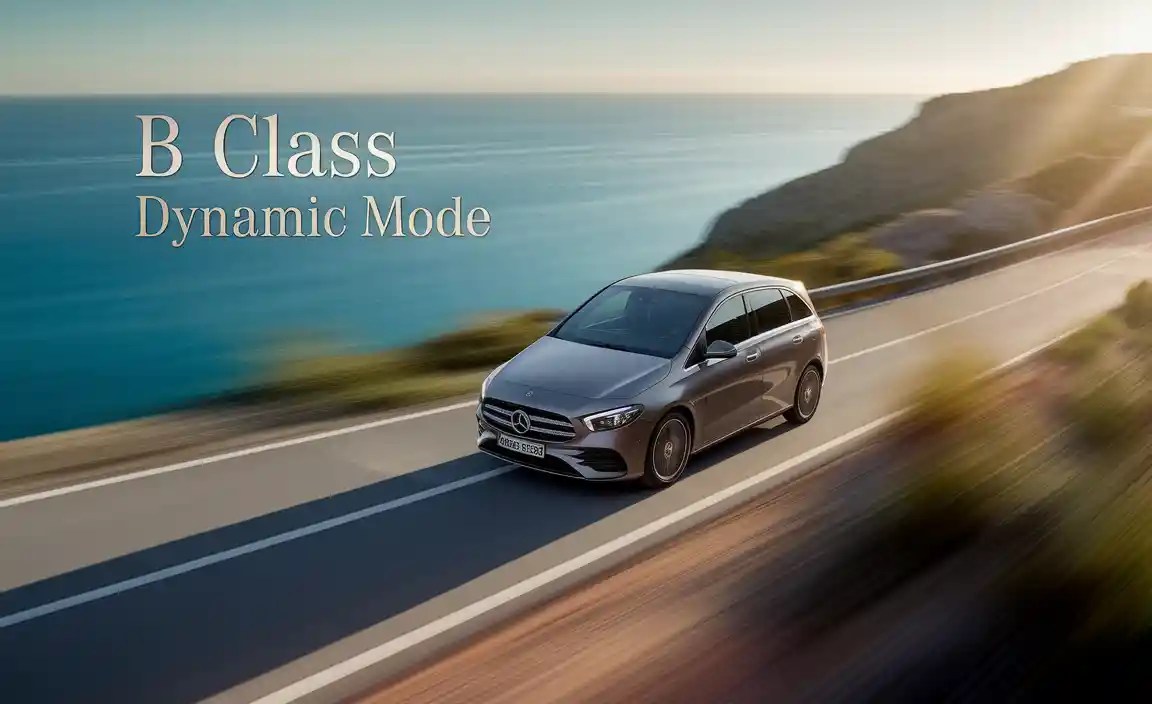
Enhanced Driving Versatility
The most apparent benefit is the B-Class’s ability to transform its character. One moment it can be a plush, comfortable cruiser, and the next, a more agile and responsive machine. This versatility means your B-Class can adapt to a wider range of driving situations and driver preferences without needing multiple vehicles.
Improved Fuel Efficiency (Eco Mode)
The dedicated “Eco” mode is a powerful tool for responsible driving. By optimizing engine and transmission responses for maximum efficiency, it helps you reduce fuel consumption. This translates to fewer stops at the pump and a more environmentally conscious drive, which is particularly beneficial for those who cover significant distances or are mindful of their carbon footprint. For more insights into optimizing fuel economy, consider resources from the U.S. Department of Energy.
Increased Driving Engagement (Sport Mode)
For drivers who appreciate a more connected feel to their vehicle, “Sport” mode is a revelation. The sharpened throttle response, quicker gear changes, and often weightier steering combine to make the B-Class feel more immediate and engaging. This can transform mundane journeys into more enjoyable experiences, especially on twisty roads or when a burst of acceleration is needed.
Personalized Driving Experience (Individual Mode)
The “Individual” mode takes personalization to the next level. It empowers you to fine-tune the car’s characteristics to your exact liking. You aren’t locked into pre-set profiles and can create a unique setup that perfectly matches your driving style and the current road conditions. This fosters a deeper connection and satisfaction with the vehicle.
Simplified Operation
Despite the sophisticated technology at play, Mercedes-Benz has made selecting these modes incredibly simple. A few button presses or a couple of taps on the screen is all it takes. This ease of use ensures that drivers can safely and effectively change the car’s driving dynamics without taking their attention away from the road.
Understanding Other Related Mercedes-Benz Driving Systems
While Dynamic Mode is a primary system for adjusting driving characteristics, Mercedes-Benz vehicles often incorporate other technologies that work in conjunction or offer complementary functionalities. Understanding these can provide a more holistic view of your B-Class’s driving capabilities.
AGILITY CONTROL Suspension
Many B-Class models come equipped with the AGILITY CONTROL suspension system. This system automatically adjusts the damping force based on the road surface and driving situation. In Comfort mode, it prioritizes a smooth ride by softening the damping. In Sport mode, it can firm up the damping for improved stability and reduced body roll during dynamic driving. This intelligent suspension works seamlessly with the Dynamic Mode selector to provide an appropriate ride quality for the chosen setting.
ECO Start/Stop Function
The ECO Start/Stop function is another feature focused on fuel efficiency, often linked to the “Eco” driving mode. When active, the engine automatically shuts off when the vehicle comes to a complete stop (e.g., at traffic lights) and restarts instantly when the brake pedal is released or the accelerator is pressed. This significantly reduces fuel consumption and emissions during idle periods. You can typically deactivate this function if you prefer continuous engine operation, although it is most effective for fuel savings. The Environmental Protection Agency (EPA) provides extensive information on the benefits of fuel-saving technologies like auto start/stop systems.
Dynamic Select Interface
The physical interface for controlling the Dynamic Select system is usually a set of buttons on the center console. These buttons might have designations like “C” (Comfort), “S” (Sport), “E” (Eco), and “I” (Individual). These are part of the car’s overall control interface, which can include the COMAND or MBUX infotainment system. Understanding your car’s specific interface is key to maximizing its features.
Troubleshooting Common Dynamic Mode Issues
While the Dynamic Mode system is generally reliable, like any complex electronic system, occasional issues can arise. Most problems are minor and can be resolved with simple steps.
Mode Not Engaging
Symptom: You press a mode button, but the car’s display doesn’t change, or the driving feel remains the same.
Possible Cause: A temporary glitch in the system.
Solution:
1. Try cycling through the modes again, perhaps in a different order.
2. Turn off the engine, wait for 30 seconds, and restart the car. This often resets electronic modules.
3. If the issue persists, it might indicate a sensor problem or a fault within the control module.
Unexpected Driving Behavior
Symptom: The car behaves erratically in a chosen mode (e.g., rough gear shifts in Comfort, sluggish response in Sport).
Possible Cause: Incorrect calibration, a software bug, or interference from another system.
Solution:
1. Ensure no other driving aids or settings are conflicting.
2. Perform a system reset by turning the engine off and on again.
3. If the behavior is consistent and concerning, consult your Mercedes-Benz dealer. Driving characteristics that deviate significantly from expectation could indicate an underlying issue requiring professional diagnosis.
“Dynamic Mode Unavailable” Message
Symptom: A message appears on the dashboard or infotainment screen indicating that Dynamic Mode is temporarily unavailable.
Possible Cause: The system may have detected a fault and is temporarily disabling the modes for safety or diagnostic purposes. This could be related to other linked systems like engine management or transmission.
Solution:
1. Safely pull over and turn off the engine. Wait a few minutes before restarting.
2. Check if the message clears. If it reappears, or if the car defaults to a single, unchangeable mode (often Comfort), it’s best to have a qualified mechanic or Mercedes-Benz service center inspect the vehicle. They can connect diagnostic tools to pinpoint the fault.
For detailed information on your specific model’s troubleshooting, always refer to your Mercedes-Benz owner’s manual. For persistent issues, seeking professional service from an authorized Mercedes-Benz dealership is recommended.
Conclusion: Mastering Your B-Class Drive
The Mercedes-Benz B-Class Dynamic Mode system is a testament to thoughtful engineering, designed not just to impress but to genuinely enhance your daily driving. By offering distinct modes like Comfort, Eco, Sport, and the highly personalizable Individual, your B-Class becomes a remarkably adaptable vehicle, ready to meet the demands of your commute, your mood, and the open road.
Understanding how each mode influences throttle response, gear shifts, steering feedback, and even suspension behavior empowers you to harness the full potential of your vehicle. Whether you’re prioritizing fuel savings with Eco, enjoying a serene journey in Comfort, seeking thrilling engagement in Sport, or crafting your perfect balance in Individual, the control is literally at your fingertips.
Embrace the flexibility. Take a moment to experiment with each setting. Notice the subtle and not-so-subtle changes in how your B-Class behaves. This exploration will not only deepen your appreciation for the engineering within your Mercedes-Benz but will also elevate your driving experience from ordinary to extraordinary, one effortless drive at a time. Enjoy mastering your B-Class.
Frequently Asked Questions About B-Class Dynamic Mode
Q1: What is the primary function of the Mercedes-Benz B-Class Dynamic Mode?
A1: The Dynamic Mode allows you to adjust the driving characteristics of your B-Class, such as throttle response, gearshift points, and steering feel, to suit different driving conditions and preferences – from comfort-focused cruising to sportier dynamics.
Q2: How do I change the driving mode in my B-Class?
A2: You can typically change modes by pressing dedicated buttons on the center console labeled with mode indicators (e.g., C, S, E) or through the infotainment system’s menu, especially if your car has MBUX.
Q3: Is the Dynamic Mode only for the engine and transmission?
A3: No, Dynamic Mode can also influence the steering system and, if your B-Class is equipped with adaptive suspension, it can adjust damping for a firmer or softer ride.
Q4: Can I customize the driving settings in my B-Class?
A4: Yes, many B-Class models offer an “Individual” or “Custom” mode that allows you to select specific settings for the engine, transmission, steering, and suspension to create your own personalized driving profile.
Q5: Which mode is best for fuel efficiency?
A5: The “Eco” mode is specifically designed for maximum fuel efficiency. It softens throttle response and encourages earlier, smoother gear shifts to reduce fuel consumption.
Q6: Does activating Sport mode significantly change how the car handles?
A6: Yes, Sport mode sharpens throttle response, makes gear changes more rapid and at higher RPMs, and often adds weight to the steering, providing a more dynamic and engaging driving experience ideal for spirited driving.
Q7: What if I see a message saying “Dynamic Mode Unavailable”?
A7: This usually indicates a fault within the system. It’s best to try restarting the car. If the message persists, it requires professional diagnosis from a Mercedes-Benz service center.

